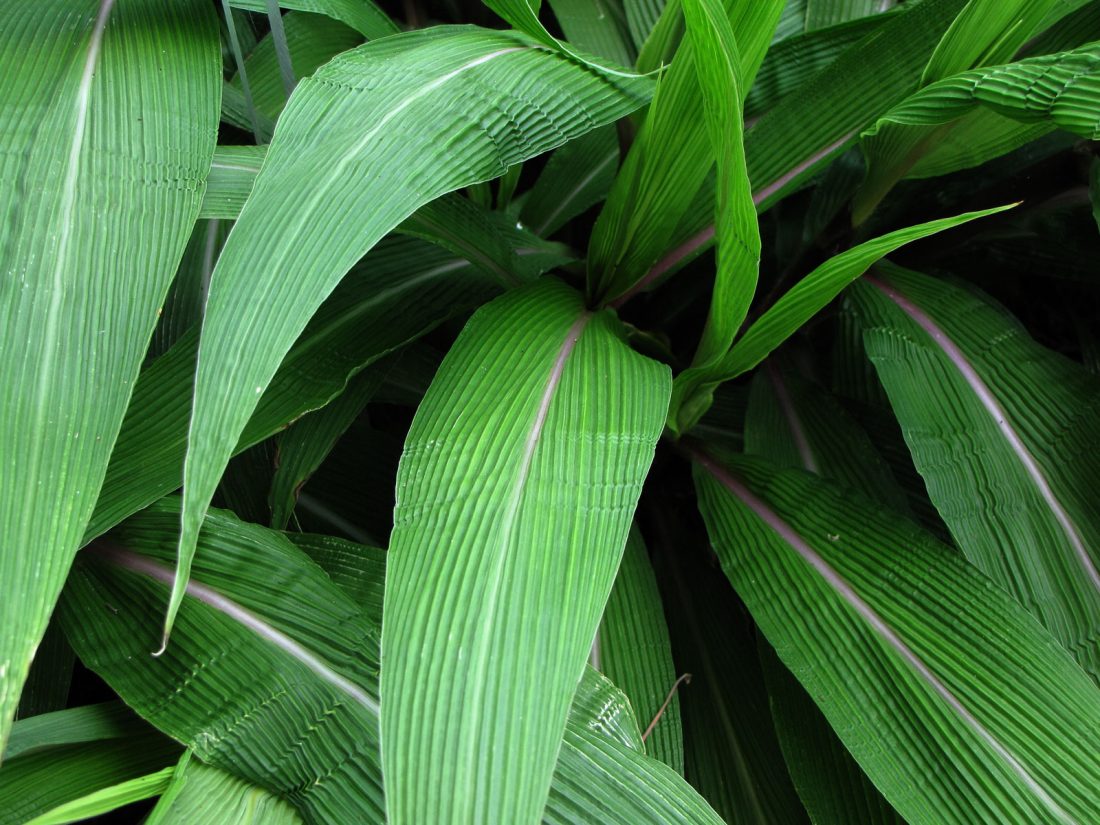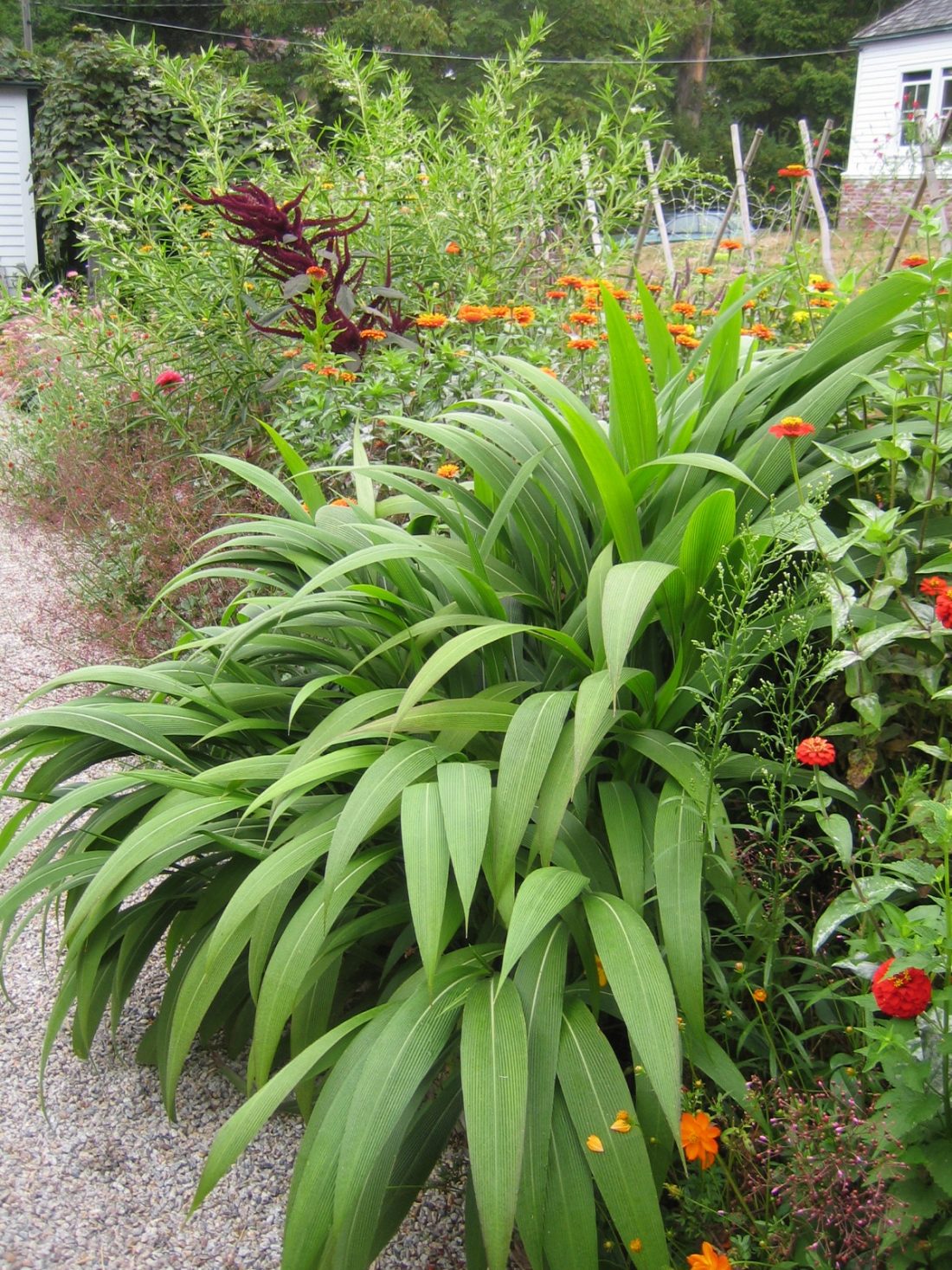Have I found it? The Palm (Grass) That Grows In New England?*
*sort of.* And When I say sort of, I am alluding to the fact that this plant that looks like a palm is not really a palm. It is a grass that looks like a palm (palm grass-like plants), thus the common and not-so-creative name of palm grass.
Palm grass, or as is known in the Latin circles as Setaria palmifolia, is a fast-growing annual grass. We brought our plants in as quart pots in late May of this year from Landcraft Environments, a wholesale nursery that operates on Long Island.

Can Palm Trees Grow in Maine or Massachusetts?
June tends to stay relatively cool on the Maine coast, and palm grass slowly starts to grow and stretch. By the end of summer, as temperatures reach the low 80s on a daily basis, Setaria palmifolia plants are now over 3 feet tall and wide. The dark green leaves are around 3-4 inches in width, with ridges running along the leaf blades, which make them resemble a palm leaf.
Having this texture in the mixed border is a nice contrast, especially in an area where palm trees (ok, they are not palm trees, but I keep thinking of them as if they were! – palm grass is what we are talking about – Palm trees will not grow in New England!) seem to grow in various shades of greenish-yellow during the summer while taking on a perma-brown cast during the winter months. There is a good reason why palm trees have evolved not to live in New England. They hate the weather! That said, I love New England and I love palms so this is a seasonal compromise after our experiment growing needle palms this past winter turned into a mushy disaster.

The leaves and texture of palm grass are coarse, with the plant forming a slightly upright clump. The palm grass makes for a nice backdrop for finer textured plants such as kangaroo paws, salvias, and foxgloves.
Here in New England, I would grow the plants in full sun, with adequate moisture and ample nutrition. We mulch our plants early in the season with compost and then give them an extra boost with organic liquid fertilizer as soon as the temperatures start to reach their summer highs.
We are planning on digging up a couple of clumps this winter and storing them in our greenhouse for safekeeping next summer. I am looking forward to seeing how large this clump will become next summer from an established plant.
Caution about Growing Palm Grass in Warmer climates
If you live in a warmer climate where palm trees grow extremely well outside, year-round (USDA zones 8 and above) I would caution you to consider sticking with your palms over the palm grass. Setaria as a genus tends to be a weed grass in southeast Asia and India.
There are reports of palm grass self-seeding in warmer parts of the United States, so I would advise against its use in these warmer climes. For us here in New England who do not have the luxury of growing palms outside year-round (maybe it is the 3 to 4 months of snow and cold that do them in as it does in most people), palm grass is a wonderful annual to provide that tropical texture in mixed plantings.
– Rodney